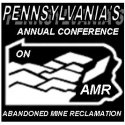Stream Assessments
There are 4 separate but equally important categories to Stream Assessments on AMD Impacted Streams. EPCAMR Staff are available to teach volunteer members of watershed organizations and school groups that are a part of a water quality monitoring program in their watershed on how to perform these tests. Alternate methods will be mentioned and recommended based on the individual situation.
1. Water Quality Monitoring:
Training consists of water quality testing utilizing YSI Pro Plus Probe, YSI Photometer, HANNA Conductivity/pH meters, HACH Field Test Kits, and/or LaMotte Field Test Kits. Every watershed group, at a minimum, should be testing for pH, Acidity, Alkalinity, and Iron. Other parameters may be suggested on a case by case basis.
2. Water Quantity Monitoring:
Training consists of water quantity monitoring is taught using a Swoffer flow meter, velocity meter, and/or VHR (Velocity Head Rod) measurements multiplied by the stream cross-section to determine the flow. Without flow, you cannot determine loading, which is important for determining the Total Maximum Daily Load (TMDL) of pollution a stream can assimilate.
3. Biological Assessment:
Training consists of macroinvertebrate sampling methods utilizing in-stream Kick Net sampling and use of Stroud Water Institute Leaf Pack Kits to aid in identification. Stream Bioassessment will be performed to determine Taxa Richness, MHI (Modified Hilsenhoff Index), % EPT (Mayflies – E, Stoneflies – P, Caddisflies – T), % Tolerance Index, % Dominance Index and an overall comparative Stream Index based on West Virginia Save our Streams Level 2 Program Guidelines. “Bugs” are excellent indicators of stream health.
4. Visual Habitat Assessments:
Training consists of an In-Stream Habitat Evaluation based on the USDA Stream Visual Assessment Protocol. Additionally, stream crossings will be assessed using the NAACC Aquatic Passability Assessments in Non-tidal Streams and Rivers. Students rate the characteristics of a stream reach and tally the individual results to show a comparative total score of Poor, Fair, Good, or Excellent.
Related Links:











